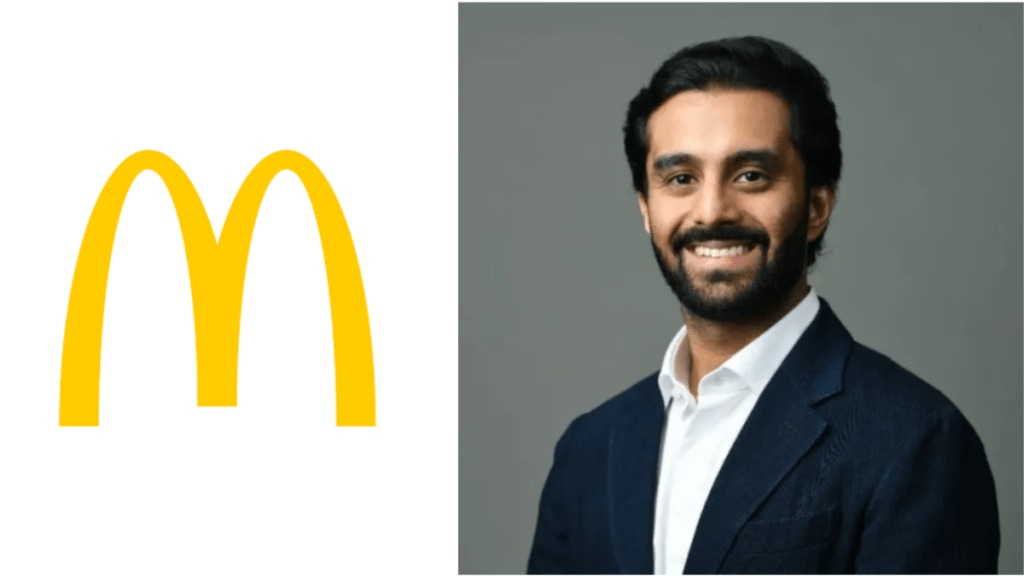McDonald’s India (West & South), operated by Westlife Foodworld, took a step recently towards what it calls “mindful indulgence”. They have launched a ‘Protein Plus Range’, featuring a plant-based protein slice that adds 5 grams of protein to any burger. The fast food company is also adding muscle to its app ecosystem while expanding its current footprint of 444 stores. Akshay Jatia, CEO of Westlife Foodworld, spoke to Christina Moniz about its efforts to enhance its menu nutritionally while negotiating “challenging times”. Edited excerpts:
What are the basic tenets of your Vision 2027 initiative? Is that plan only for India or does it apply globally?
Vision 2027 represents the strategic roadmap for our next phase of growth, built around four key pillars. First, we are focusing on a meals strategy—achieving market leadership in core day parts through menu innovation and targeted marketing. Second, our omnichannel strategy aims to integrate various customer touchpoints into a seamless One McDonald’s platform. This involves enhancing digital capabilities while ensuring consistent experiences whether customers engage with us through our restaurants, delivery platforms, or mobile applications. Third, we are accelerating our network expansion to reach 580-630 restaurants by 2027. This growth will focus on both fortifying existing markets and penetrating underserved geographies, particularly in South India and emerging towns. Finally, we are committed to leading with performance, targeting superior business metrics through operational excellence.
Tell us more about your expansion plans.
Our network expansion strategy remains aggressive yet prudent, enabling us to penetrate existing and emerging markets effectively. Having established clear leadership in Western India, we are now strategically accelerating our presence in the South, where we see significant growth potential. We continue to add 40 to 50 new restaurants annually, largely funded through internal accruals, aligned with our Vision 2027 goal. From a consumer segment perspective, we continue to see strong engagement across demographics, but with notable traction among younger consumers.
Fast food brands have been facing some challenges in recent months on account of rising raw material prices and weak demand. How are you tackling these?
Yes, while recent months have been challenging for the QSR (quick service restaurants) industry, we believe this is a transitory phase. In times like these, what matters are our core values of great-tasting, hygienic food, value for money and convenience. These values have only become more important today. Our focus is also on ensuring strong operational discipline and continuing to invest in the future through restaurant expansion, digital infrastructure, and brand-building. We’ve also sharpened our focus on unit economics, structurally eliminating inefficiencies and bad costs from the system. This disciplined approach has enabled us to generate healthy cash flows, even amid macroeconomic headwinds, while laying a solid foundation for future expansion.
From an industry standpoint, we believe that there is a huge growth opportunity. The frequency of eating out is still in its early stages, compared to many Asian markets. As our per capita incomes continue to grow, we expect to see disproportionate growth in outside food consumption. Our ambition in the long term is to build a network of over 1,000 restaurants, driven by sustained demand, strong brand affinity, and untapped market potential.
What volume of your business currently comes from online channels versus dine-in?
Our dine-in business has demonstrated strong resilience, while our off-premise channels also continue to show good traction. Notably, drive-thru is a promising growth lever, contributing meaningfully to many restaurants. Our omnichannel strength has been a key differentiator, allowing us to serve customers however they choose to engage with us. Of our total sales, nearly 75% are digital, and 55 to 60% are generated on premise.
We have also been investing significantly in our digital ecosystem, the McDonald’s App and McDelivery, to build direct relationships with customers beyond third party delivery platforms. Our app ecosystem allows us to enhance the overall customer relationship while benefiting from the discovery capabilities of aggregators. We engage with over 3 million monthly active users with our apps. Our digital loyalty programme, My M Rewards, also strengthens brand loyalty and enhances the value customers can get from the brand.
With consumers increasingly scrutinising nutrition labels and ingredients, how are you catering to those seeking healthier offerings?
From establishing separate vegetarian and non-vegetarian kitchen sections, which was a first for McDonald’s globally, to creating the McAloo Tikki, which now travels to international markets, our Indian journey became a case study in cultural adaptation. Today, the challenge goes beyond vegetarian and non-vegetarian. Consumers are increasingly shaping their dietary choices around wholesomeness, ingredient sourcing, and sustainability. Since opening our first McDonald’s restaurant in Mumbai in 1996, Westlife Foodworld has built a robust farm-to-table supply chain that sources nearly 100% of ingredients locally. We practice a ‘real food real good’ philosophy, whether it is by nutritionally enhancing our menu or displaying calorific information. Some of our key initiatives include reducing sodium in our fries, lowering oil content in mayonnaise, eliminating artificial colours and flavours and the elimination of added MSG.
How have recent launches like the protein slice performed? And how are you marketing them?
We collaborated with the apex government backed food-tech institute CSIR-CFTRI to introduce innovations like the multi-millet bun and protein plus slice that contains plant-based protein, which can be added to any burger. This was in response to insights on protein deficiency in Indian diets, allowing customers to personalise nutrition without compromising on taste. The response has been very encouraging. On the first day of launch itself, we served over 32,000 protein plus slices. Most of our stores were stocked out in the initial days.
On the marketing front too, we focus on credible voices to create engaging campaigns for our consumers. Our recently launched protein plus range and multi-millet bun were championed by acclaimed chef Sanjeev Kapoor. Gen Z and millennials are responding well to our menu innovations, ‘experience of the future’ stores (that offer self-ordering kiosks and healthier offerings) and sustainability efforts.

